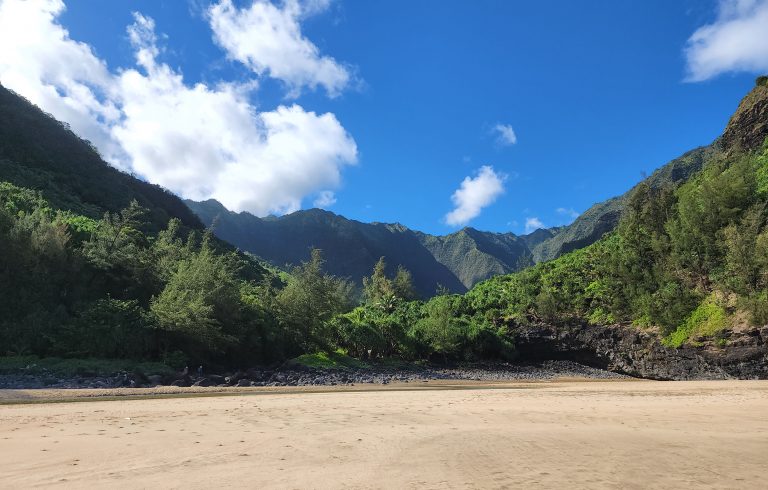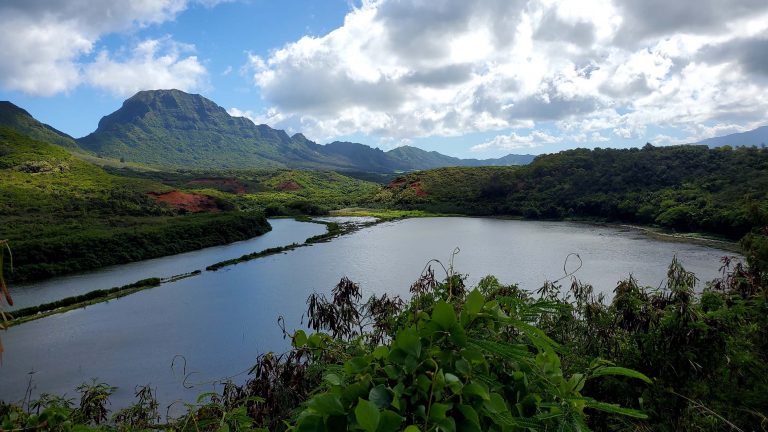Zombie Bunny is Reader-supported and may earn an affiliate commission through links on our site.

10 Unmissable Spots for Your Ultimate Travel Bucket List
Unearth the world's most mesmerizing locales with our top 10 unmissable spots for your ultimate travel bucket list. #TravelBucketList #WorldTravel
Embark on a journey of a lifetime as we explore ten unmissable spots that deserve a place on your ultimate travel bucket list. From the ancient ruins of Machu Picchu to the vibrant markets of Jaipur, we delve into the unique appeal of each location, offering valuable insights into their history, culture, and local life. This blog also shares handy travel tips and the best times to visit each spot. Get ready to craft your ultimate travel bucket list and set sail on an extraordinary global adventure.
Introduction: Embarking on the Journey of a Lifetime
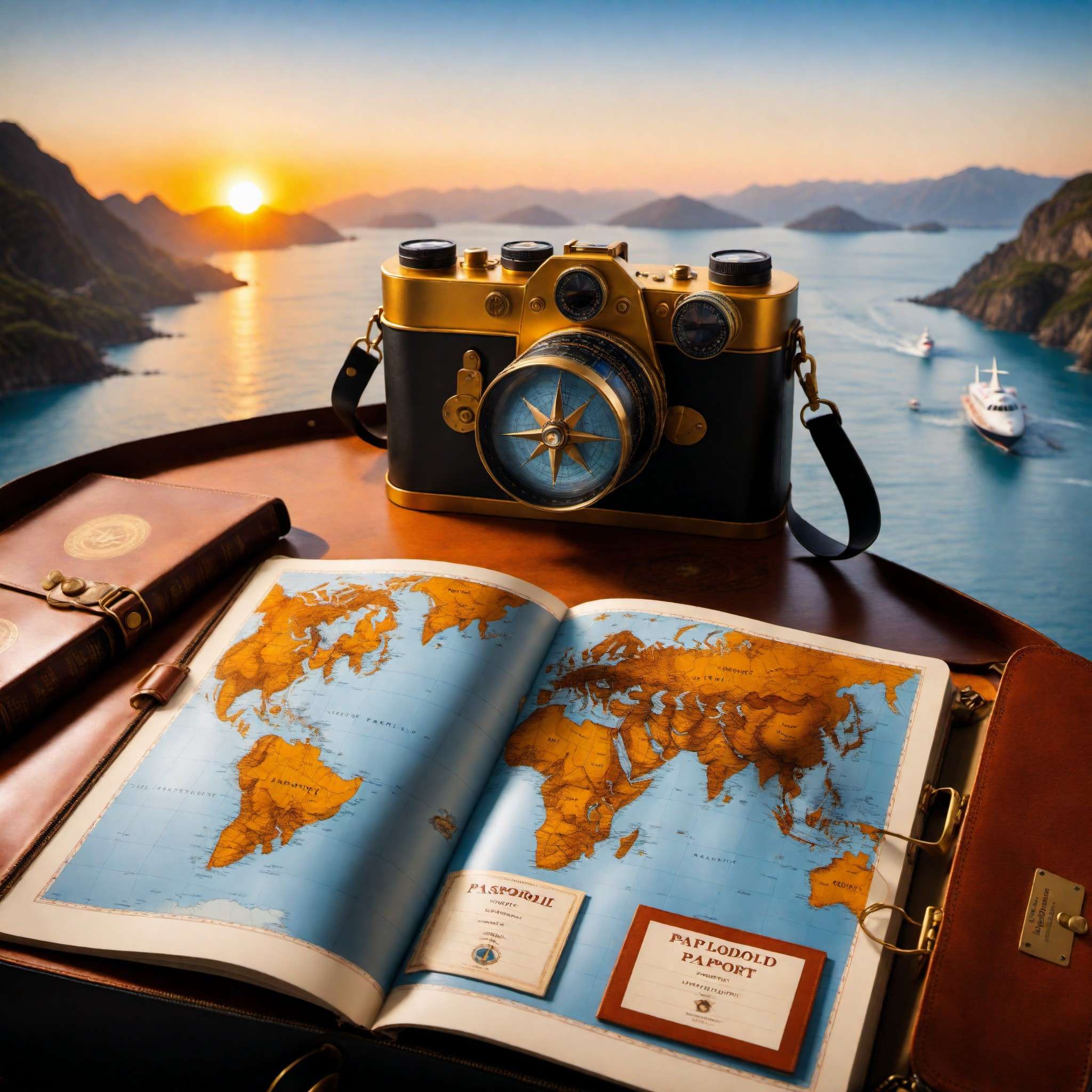
© Copyright , ZombieBunny.Org
Importance of a travel bucket list
A travel bucket list is not just a list of places. It’s a compilation of dreams weaved into experiences and destinations we yearn to explore. It’s the testament of our desire to break free from routine and dive into the vibrant sea of global culture. Every item on your travel bucket list signifies a different aspect of your personality, be it the thrill-seeker in you, the history buff, or the nature lover.
Creating a travel bucket list is like drawing a roadmap for your wanderlust. It helps prioritize your travel goals, acting as a motivating factor to save and plan for your next adventure. It introduces purpose and direction to your travel plans, transforming them from vague ideas to achievable goals. Not only does it fuel your travel dreams, but it also makes the journey towards achieving them more real and tangible. So why wait? Start crafting your ultimate travel bucket list today and set sail on the journey of a lifetime.
What makes a location unmissable
What makes a location unmissable? It’s not just about breathtaking landscapes or iconic landmarks. An unmissable destination encapsulates an experience that leaves an indelible mark on your soul. It could be the ancient ruins that whisper tales of a bygone era, the vibrant lively markets echoing with the sounds of barter, or the serene natural beauty that leaves you in awe.
An unmissable spot is where culture, history, and nature converge to create a unique tapestry of experiences. It’s where every alleyway tells a story, every local you meet becomes a part of your journey, and every sunset paints a memory that stays with you long after you’ve returned. It stirs emotions, challenges perspectives, and inspires curiosity.
More than just a place, it’s the feeling that you take away from it. It’s the sense of fulfillment when standing atop a mountain you’ve only seen in pictures, the joy of tasting a local delicacy that bursts with flavors, or the tranquility of watching a sunrise in a foreign land. These experiences are what make a location unmissable. They make your journey rich and fulfilling, turning travel into an enriching journey of self-discovery. So, as you craft your travel bucket list, seek out these unmissable spots that promise experiences beyond the ordinary.
A preview of what to expect in the post
In this blog post, we’re taking you on an extraordinary journey across the globe, showcasing ten unmissable spots that deserve a place on your ultimate travel bucket list. From the ancient, mystical ruins of Machu Picchu in Peru to the vibrant, bustling markets of Jaipur in India, we have handpicked must-visit destinations that promise unforgettable experiences.
Each section of the blog will delve into a different location, exploring its unique appeal, significant attractions, and the experiences that make it unmissable. We’ll provide you with valuable insights into the history, culture, and local life of each destination. Along the way, we’ll also share handy travel tips and highlight the best time to visit each spot, helping you plan your trips more effectively.
This post is not just a list of destinations; it’s a guide to experiences. It’s about wandering through the wilderness of Yellowstone National Park, immersing yourself in the rich cultural heritage of Kyoto, marveling at the architectural wonders of Rome, exploring the mystical landscapes of Iceland, experiencing the luxury of Maldives, witnessing the majestic wildlife of Serengeti, and soaking in the cultural extravaganza of Jaipur. So buckle up and get ready to embark on a journey to craft your ultimate travel bucket list.
Wandering Through the Ancient Wonders of Machu Picchu Peru
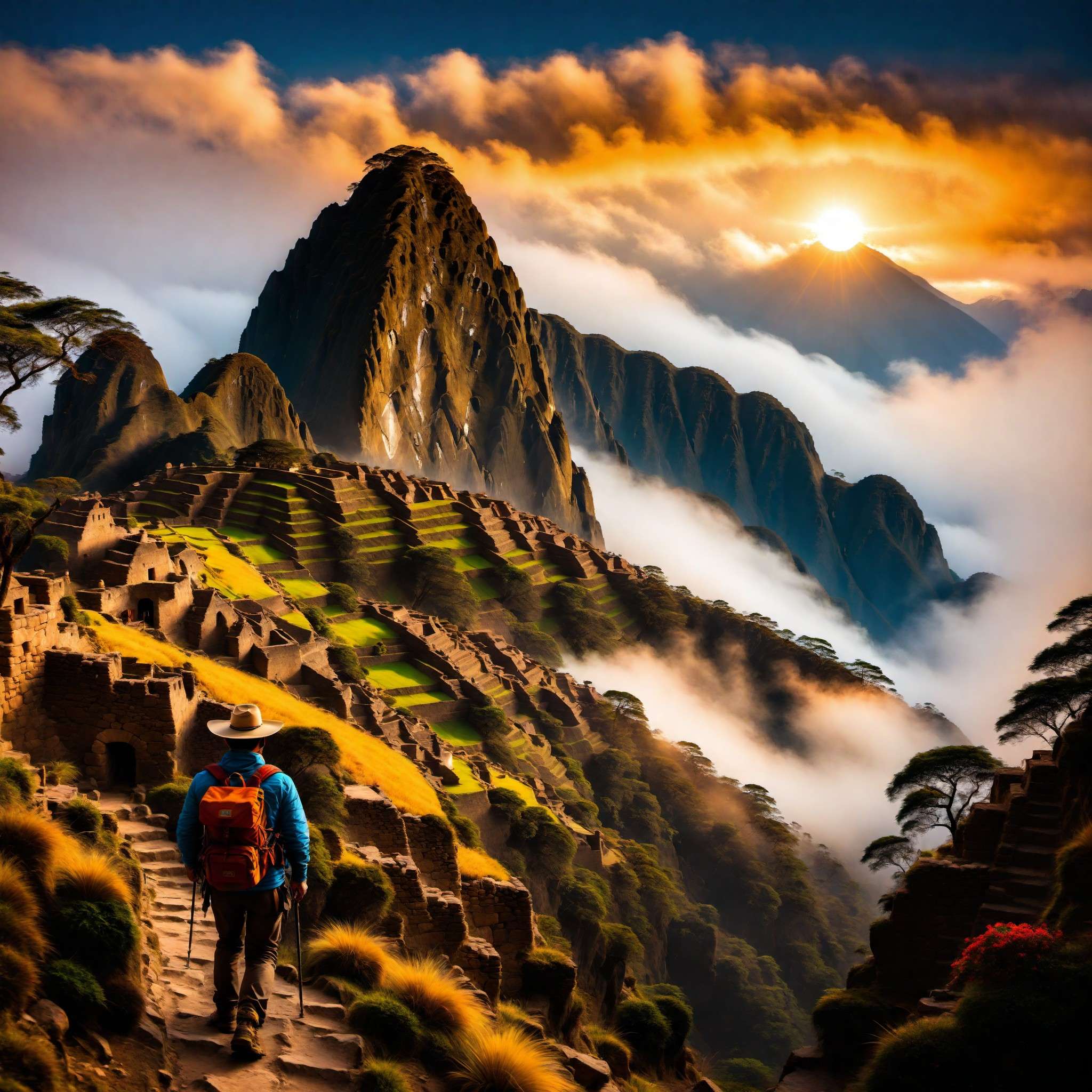
© Copyright , ZombieBunny.Org
Historical significance of Machu Picchu
Perched high in the Andes, atop a ridge cut by the Urubamba River, lies the ancient city of Machu Picchu. A symbol of the Incan Empire’s architectural prowess, it’s a site of immense historical significance. Despite its remote location, it thrived as a center of politics, agriculture, and religion, showcasing the Incan civilization’s ingenuity.
Built in the 15th century, under the reign of Emperor Pachacuti, Machu Picchu is a marvel of ancient engineering. Its finely cut stone structures, fitted together without mortar, have withstood the test of time, surviving earthquakes and weathering elements. The city’s layout reflects the Incas’ astronomical knowledge, with many structures aligned to the sun’s solstices and equinoxes.
Machu Picchu is not just a city but a testament to a civilization that flourished in harmony with nature. The terraces that cut across the mountain slopes provided fertile land for agriculture, while the natural springs were ingeniously channeled into a network of canals. The city’s intricate design reveals the Incas’ understanding of their environment and their ability to adapt and thrive.
While the city was abandoned during the Spanish Conquest, it remained untouched and undiscovered until 1911, when explorer Hiram Bingham brought it to the world’s attention. Today, Machu Picchu stands as a UNESCO World Heritage Site and one of the New Seven Wonders of the World, a testament to the Incan civilization’s legacy. Its historical significance and breathtaking beauty make it an unmissable spot on your ultimate travel bucket list.
Travel tips for Machu Picchu
Visiting Machu Picchu is a dream for many, but to make the most of your trip, it’s essential to plan well. The first tip is to acclimatize to the high altitude. Located at over 2,400 meters above sea level, altitude sickness can be an issue. Spend a day or two in Cusco or the Sacred Valley to adjust before heading to Machu Picchu.
Next, timing is crucial. The dry season from May to September offers the best weather, but it’s also the busiest time. If you want to avoid the crowds, consider visiting in the shoulder periods of April or October. Remember, the site has a daily visitor limit, so book your tickets in advance.
Getting to Machu Picchu can be an adventure in itself. Most visitors opt for the train ride from Cusco to Aguas Calientes, the town at the base of Machu Picchu. From here, a bus ride takes you up to the site. For the more adventurous, the Inca Trail offers a strenuous but rewarding four-day hike.
At the site, hire a guide to understand the historical context of the ruins. Don’t forget to explore lesser-known areas like the Sun Gate or Inca Bridge. Lastly, remember to respect the site. Stay on designated paths, don’t touch the structures, and carry out any trash.
With these tips in mind, your trip to Machu Picchu promises to be an unforgettable experience, making it an unmissable spot on your travel bucket list.
Unique experiences at Machu Picchu
Machu Picchu is not just about the ruins; it’s about the unique experiences that make your visit memorable. One such experience is the trek along the Inca Trail. A four-day journey through cloud forests and ancient ruins, culminating with a sunrise view of Machu Picchu from the Sun Gate, is an experience like no other. This trail allows you to walk in the footsteps of the Incas, offering a glimpse into their world.
Another unmissable experience is climbing Huayna Picchu, the towering peak that forms the backdrop of most Machu Picchu photos. The climb is challenging but rewards you with a bird’s-eye view of the ancient city.
For a quieter, equally rewarding experience, consider climbing Machu Picchu Mountain, the site’s highest point. The panoramic vistas of the surrounding Andean peaks and the Urubamba River winding through the valley below are a sight to behold.
Don’t miss the opportunity to explore the lesser-known Temple of the Moon, located on the far side of Huayna Picchu. It’s a tranquil spot away from the crowds and offers a unique perspective of the Incan craftsmanship.
Lastly, take a moment to sit and soak in the atmosphere. As the clouds drift across the peaks and the llamas graze amongst the ruins, the sense of history and the sheer beauty of the site offer a unique, peaceful experience. These experiences make Machu Picchu more than just a destination; they make it a journey into the past, an adventure that deserves a spot on your ultimate travel bucket list.
Experiencing the Wilderness at Yellowstone National Park USA

© Copyright , ZombieBunny.Org
Diversity of Yellowstone National Park
Yellowstone National Park, America’s first national park, is a treasure trove of natural diversity. This sprawling wilderness, encompassing over 2.2 million acres, is a testament to the dynamic and diverse nature of our planet. It’s a place where geysers erupt from the earth, azure lakes shimmer under the sun, and dense forests provide sanctuary to a rich variety of wildlife.
The park boasts over 10,000 hydrothermal features, including the world-famous Old Faithful geyser. These geysers and hot springs, set against a backdrop of rugged mountains and deep canyons, create an otherworldly landscape.
The park’s diversity extends to its rich flora and fauna. It’s home to the largest concentration of mammals in the lower 48 states, including grizzly bears, wolves, and herds of bison and elk. The park’s diverse habitats, from its alpine meadows to its lush valleys, support over 1,700 species of trees and plants, including wildflowers that paint the landscape with a riot of colors.
Yellowstone is not just a park; it’s a sanctuary where nature thrives in its raw, untamed glory. It’s a place where you can witness the drama of life and death play out in the wild, where you can stand in awe of nature’s power and beauty. Its diversity makes it a must-visit destination, an unmissable spot on your ultimate travel bucket list. Explore, experience, and immerse yourself in the wilderness of Yellowstone National Park.
Must-see spots in Yellowstone
Yellowstone National Park is packed with must-see spots that showcase its natural beauty and diversity. Start with Old Faithful, the park’s most famous geyser. Its predictable eruptions are a spectacle to behold, shooting water up to 185 feet in the air. Nearby, the boardwalk trail takes you past a host of other geysers and vibrant hot springs, including the stunning Grand Prismatic Spring, renowned for its vibrant rainbow of colors.
The Grand Canyon of the Yellowstone is another must-see. This dramatic canyon carved by the Yellowstone River features two breathtaking waterfalls. The view from Artist Point, with the Lower Falls cascading into the canyon’s colorful walls, is one of the park’s most iconic vistas.
For wildlife watching, head to Lamar Valley, often dubbed as America’s Serengeti. Here, you can spot herds of bison, packs of wolves, and if you’re lucky, grizzly bears. Hayden Valley is another wildlife hotspot, particularly for spotting herds of elk and grizzly bears.
Don’t miss the otherworldly Mammoth Hot Springs, with its terraced limestone formations, and Yellowstone Lake, one of the largest high-altitude lakes in North America, perfect for a serene picnic.
Each of these spots offers a unique glimpse into the natural wonders of Yellowstone, making them unmissable on your visit. So, gear up and get ready to explore these natural wonders that make Yellowstone a standout spot on your ultimate travel bucket list.
Adventure activities in Yellowstone
Yellowstone National Park is a playground for outdoor enthusiasts, offering a plethora of adventure activities. With over 1,000 miles of trails, hiking is a popular way to explore the park’s diverse landscapes. For a moderate hike, try the Mount Washburn trail, which offers panoramic views of the park. For a more challenging adventure, the Avalanche Peak trail offers stunning views of Yellowstone’s wilderness.
For water enthusiasts, the park’s rivers and lakes provide opportunities for fishing, boating, and even white-water rafting. The Yellowstone River is a favorite among anglers, home to cutthroat trout. The park’s numerous lakes, particularly Yellowstone Lake, offer serene spots for kayaking and canoeing.
Wildlife watching is another thrilling activity in Yellowstone. Join a guided wildlife tour to increase your chances of spotting the park’s iconic species, including bears, wolves, and herds of bison and elk.
In winter, the park transforms into a snowy wonderland, offering a whole new set of adventures. Cross-country skiing and snowshoeing are popular ways to explore the park’s winter landscapes. For a unique experience, consider a guided snowmobile tour or a winter wildlife safari.
Whether it’s hiking amidst geysers, fishing in pristine rivers, or exploring the park’s winter landscapes, Yellowstone offers a range of adventure activities. So, pack your adventurous spirit and prepare to immerse yourself in the wilderness of Yellowstone, making it an unmissable spot on your ultimate travel bucket list.
Immersing in the Cultural Heritage of Kyoto Japan

© Copyright , ZombieBunny.Org
Cultural richness of Kyoto
Kyoto, the former capital of Japan, is a city where tradition meets modernity. Known as the cultural heart of Japan, Kyoto’s rich cultural heritage is woven into its everyday life. The city is home to 17 UNESCO World Heritage Sites, over 1,600 Buddhist temples, and more than 400 Shinto shrines, many of them centuries old, each telling a tale of the city’s illustrious past.
Kyoto’s cultural richness extends beyond its architecture. It’s the cradle of many traditional Japanese arts and crafts, including tea ceremony, flower arrangement, and the art of kimono making. The city’s Gion district is the epicenter of geisha culture, where you can catch a glimpse of geishas, adorned in exquisite kimonos, rushing to their next appointment.
The city’s cuisine is another aspect of its cultural richness. Known as Kyo-ryori, Kyoto’s traditional cuisine is a culinary art form, combining seasonal ingredients with delicate flavors and artistic presentation.
Kyoto is also a city of festivals. From the cherry blossom viewing parties in spring to the spectacular Gion Festival in summer and the beautiful Arashiyama Bamboo Grove illumination in winter, the city’s vibrant festivals offer a unique glimpse into its cultural fabric.
Kyoto is more than a city; it’s a living museum where traditions are kept alive, where every street, temple, and garden tells a story. Its cultural richness makes it an unmissable spot on your ultimate travel bucket list. Immerse yourself in Kyoto’s cultural heritage, and let its story unfold before you.
Best time to visit Kyoto
Kyoto, with its rich cultural heritage and breathtaking scenery, is a city that can be enjoyed any time of the year. However, there are certain periods when the city truly comes alive, offering visitors unique experiences.
Spring, from late March to early April, is arguably the best time to visit Kyoto. This is when cherry blossoms, or sakura, bloom across the city, painting it in shades of pink and white. The sight of ancient temples and shrines framed by blooming cherry trees is truly enchanting. The Philosopher’s Path and Maruyama Park are popular spots for cherry blossom viewing.
Autumn, from November to early December, is another excellent time to visit. The city’s numerous gardens and temple grounds burst into a riot of colors as maple leaves turn red, orange, and yellow. The autumn foliage at Kiyomizu-dera Temple and Eikando Temple is particularly stunning.
While summer can be hot and humid, it’s when Kyoto’s biggest festival, the Gion Festival, takes place. This month-long festival in July is a spectacle of processions, street food, and traditional music.
Winter in Kyoto has its own charm. The city sees fewer tourists, and its temples and gardens, blanketed in snow, offer a serene, picturesque sight.
Each season in Kyoto offers a distinct experience, adding to the city’s cultural richness. So, choose the time that aligns with your interests and prepare to be captivated by the timeless charm of Kyoto on your ultimate travel bucket list.
Must-try experiences in Kyoto
When visiting Kyoto, immersing yourself in its cultural heritage is a must. Start with a visit to the city’s ancient temples and shrines. The golden pavilion of Kinkaku-ji, the thousand vermilion gates of Fushimi Inari Taisha, and the expansive grounds of Tō-ji are just a few that should be on your list.
Take a leisurely stroll along the Philosopher’s Path, a scenic walkway that follows a canal lined with hundreds of cherry trees. It’s particularly beautiful in spring when the cherry blossoms are in full bloom.
Experience the traditional tea ceremony, an integral part of Kyoto’s culture. The ceremony is not just about drinking tea, but about mindfulness, aesthetics, and connection. There are many tea houses in Kyoto where you can participate in a tea ceremony.
Try Kyoto’s traditional cuisine, known as Kyo-ryori. It’s a culinary experience that emphasizes seasonal ingredients, delicate flavors, and beautiful presentation. Don’t miss the chance to try kaiseki, a traditional multi-course meal.
Visit the Nishiki Market, known as Kyoto’s kitchen. Here, you can sample a variety of local foods, including pickles, seafood, and sweets.
Finally, explore the Gion district, known for its well-preserved machiya houses and teahouses where geishas entertain. If you’re lucky, you might catch a glimpse of a geisha on her way to work.
Each of these experiences offers a unique glimpse into Kyoto’s rich cultural heritage, making them unmissable on your visit. So, immerse yourself in the cultural richness of Kyoto, an essential spot on your ultimate travel bucket list.
Marveling at the Architectural Wonders of Rome Italy
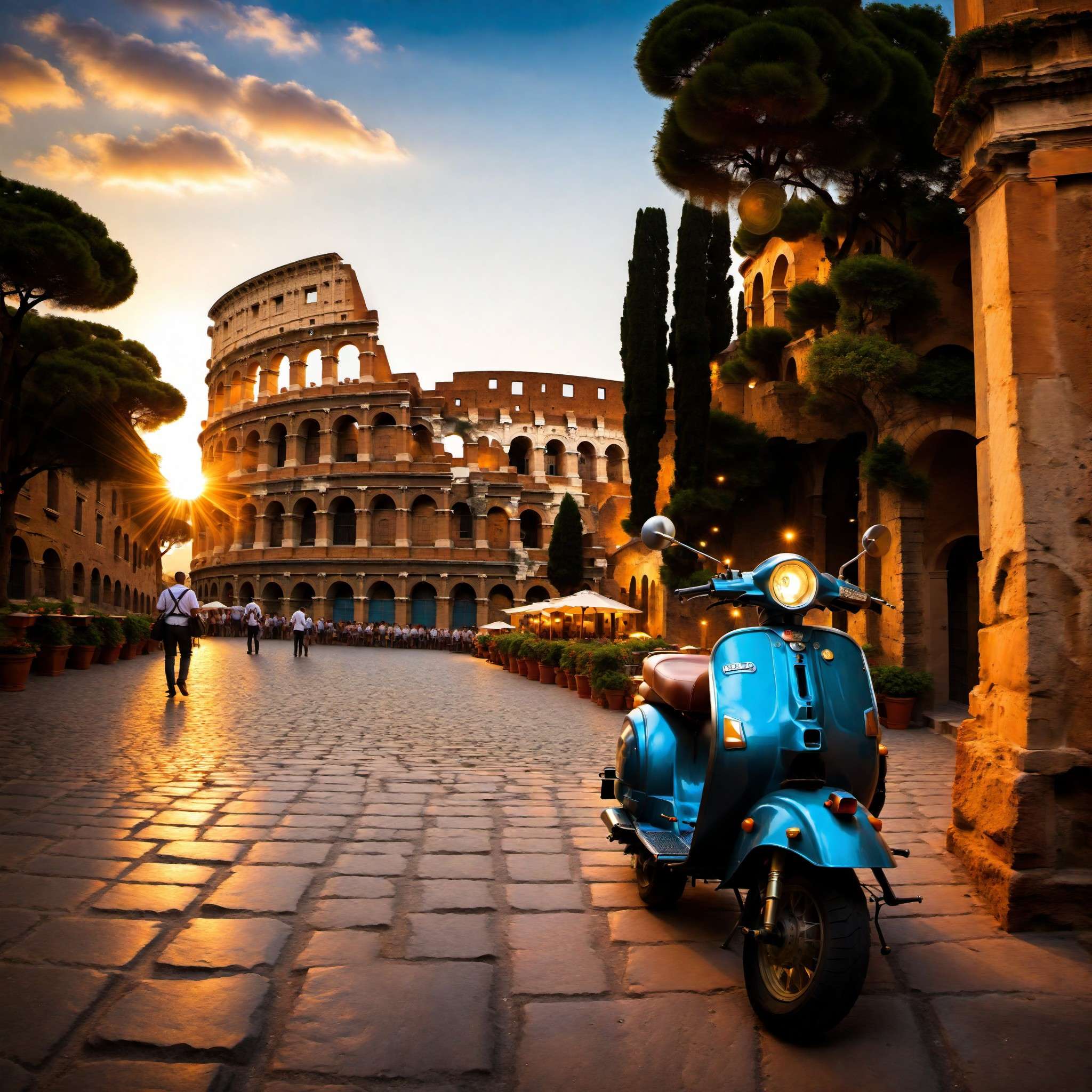
© Copyright , ZombieBunny.Org
Historical landmarks of Rome
Rome, the Eternal City, is a living museum of historical landmarks that transport you back in time. The city’s rich history, spanning over 28 centuries, is etched into its streets and monuments, making it a paradise for history buffs.
The Colosseum, an iconic symbol of Imperial Rome, is a must-visit. This grand amphitheater, where gladiatorial contests and public spectacles were held, is a testament to the engineering prowess of the ancient Romans.
Another architectural marvel is the Pantheon, the best-preserved structure from ancient Rome. Its massive dome, the largest unsupported dome in the world, and the oculus at its center, are awe-inspiring.
The Roman Forum, once the heart of the Roman Empire, is a sprawling complex of ruined temples, arches, and public buildings. Walking through the Forum is like stepping back in time, offering a glimpse into the daily life of ancient Rome.
The Vatican City, an independent city-state enclaved within Rome, is home to St. Peter’s Basilica, the largest church in the world, and the Sistine Chapel, adorned with Michelangelo’s magnificent frescoes.
Lastly, no visit to Rome is complete without a stop at the Trevi Fountain. This Baroque masterpiece, with its detailed sculptures and cascading waters, is one of the city’s most beloved landmarks.
Each of these historical landmarks offers a unique window into Rome’s past, making them unmissable on your visit. So, prepare to step back in time and immerse yourself in the history and architecture of Rome, an essential spot on your ultimate travel bucket list.
Italian cuisine delights
When in Rome, indulging in Italian cuisine is a must. Italian food, known for its simplicity and use of fresh, quality ingredients, is a culinary delight. The city offers a plethora of dining options, from traditional trattorias to high-end restaurants, each serving up mouthwatering dishes.
Start with a classic Roman dish, pasta alla carbonara. Made with egg, Pecorino Romano cheese, cured guanciale, and black pepper, this simple yet delicious dish is a Roman staple. Another must-try pasta dish is cacio e pepe, a minimalist masterpiece made with just pasta, Pecorino Romano cheese, and black pepper.
For pizza lovers, Roman-style pizza is a must-try. Unlike its Neapolitan counterpart, Roman pizza is thin and crispy, topped with fresh ingredients.
Don’t miss the opportunity to try supplì, a popular Roman street food. These fried rice balls filled with mozzarella and ragu are a tasty treat.
Complete your Italian culinary adventure with a scoop (or two) of gelato. Rome is dotted with gelaterias, offering a wide range of flavors from classic chocolate and vanilla to unique combinations like basil and lemon.
Lastly, pair your meals with a glass of Italian wine. Whether it’s the robust reds of Tuscany or the crisp whites of Friuli, Italian wines are the perfect accompaniment to any meal.
Italian cuisine is not just about food; it’s about an experience, a celebration of life and love. So, while marveling at the architectural wonders of Rome, also indulge in its culinary delights, making it an unmissable spot on your ultimate travel bucket list.
Living the local life in Rome
Living like a local is one of the best ways to experience the true spirit of Rome. It’s about embracing the Italian concept of ‘la dolce vita’ or ‘the sweet life’. The city’s vibrant neighborhoods, each with its unique character, offer a glimpse into the local life.
Start your day with an espresso at a local bar, standing at the counter just like the locals do. Then, head to a local market, like the bustling Campo de’ Fiori or the historic Mercato Trionfale, where locals shop for fresh produce, cheese, and meats.
Take a leisure stroll through the city’s cobblestone streets and piazzas, stopping at a local ‘osteria’ for lunch. Savor the slow-paced Italian dining culture, taking time to enjoy your food and wine.
In the afternoon, join the locals in the age-old tradition of ‘passeggiata’, a leisurely walk around the neighborhood, often culminating in a gelato or an aperitivo.
Experience Rome’s vibrant nightlife in Trastevere, a neighborhood known for its lively bars and traditional trattorias. For a quieter night, head to Monti, a trendy neighborhood with a bohemian vibe.
Lastly, strike up a conversation with the locals. Romans are known for their warmth and hospitality, and they’re always ready to share stories about their city.
Living the local life offers a more authentic and immersive experience, allowing you to understand the city beyond its famous landmarks. So, when in Rome, live as the Romans do, and make it an unmissable spot on your ultimate travel bucket list.
Exploring the Mystical Landscapes of Iceland
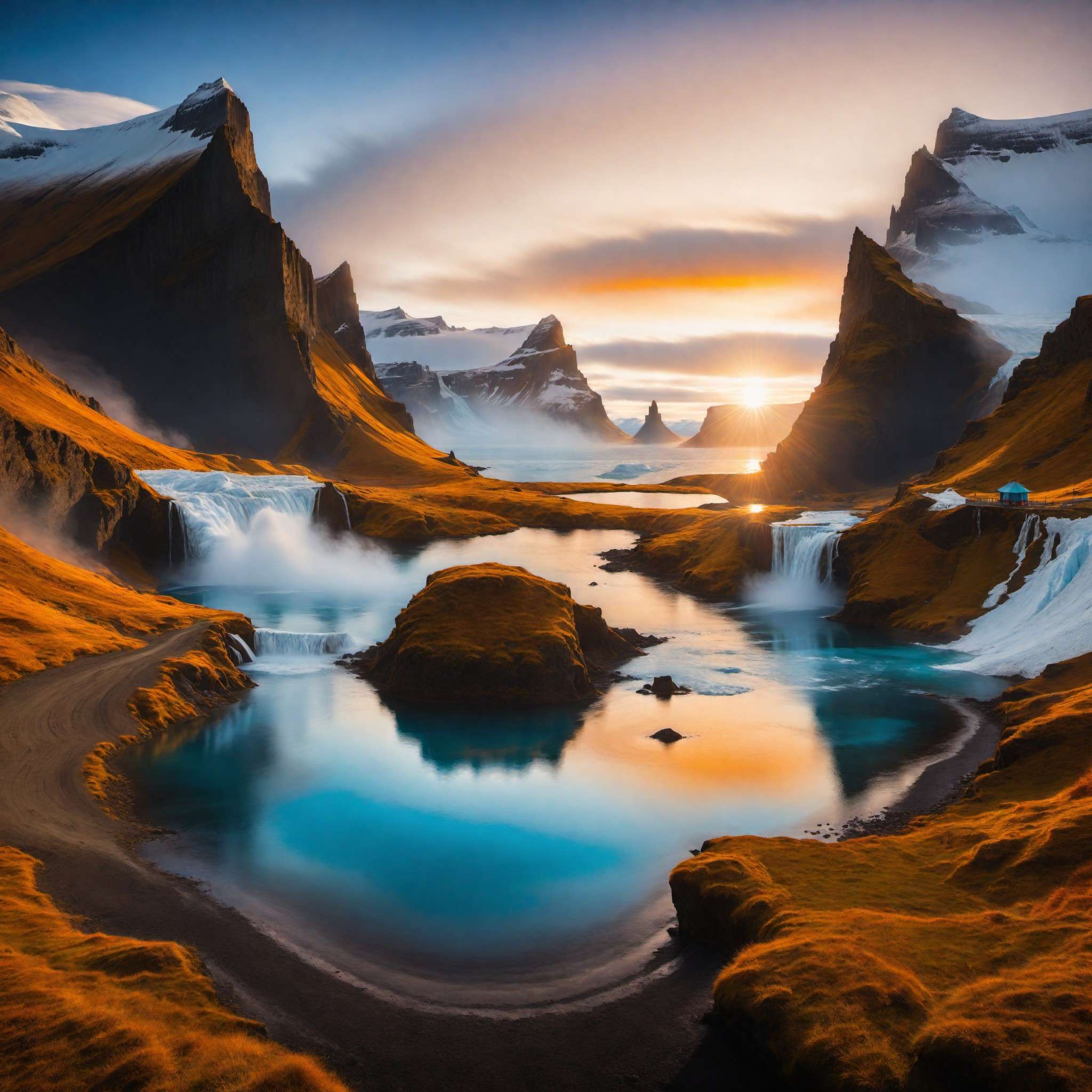
© Copyright , ZombieBunny.Org
Natural wonders of Iceland
Iceland, the land of fire and ice, is a country of stunning natural wonders. From active volcanoes and gushing geysers to massive glaciers and dramatic fjords, Iceland’s diverse landscapes are a feast for the eyes.
The Golden Circle, a popular tourist route, is home to some of the country’s most iconic sights. The mighty Gullfoss waterfall, the geysers of Geysir, and the Thingvellir National Park, a UNESCO World Heritage Site known for its tectonic rift valley, are among the must-see spots.
The Jökulsárlón glacier lagoon, with its floating icebergs, is another natural wonder that takes your breath away. Nearby, on the Diamond Beach, you can see icebergs washed ashore, sparkling like diamonds against the black sand.
Vatnajökull, Europe’s largest glacier, and Snæfellsjökull, a glacier-capped stratovolcano, are awe-inspiring sights, as are the many fjords that carve the country’s coastline, particularly in the Westfjords region.
One of Iceland’s most unique experiences is a dip in one of its many geothermal pools. The Blue Lagoon, with its milky-blue geothermal waters, is the most famous, but there are many lesser-known hot springs across the country, offering a relaxing soak amidst stunning landscapes.
Lastly, don’t miss the chance to witness the Northern Lights. This natural light show, with its dancing colors lighting up the night sky, is a sight to behold.
Each of these natural wonders offers a unique experience, making Iceland an unmissable spot on your ultimate travel bucket list. So, gear up and get ready to explore the mystical landscapes of Iceland.
Icelandic traditions and myths
Iceland, a land of ancient sagas and old traditions, is rich in folklore and myths. The country’s unique customs and legends are deeply rooted in its history and landscape, adding an enchanting layer to its natural beauty.
One of the most enduring Icelandic traditions is the belief in ‘hidden people’ or ‘huldufólk’. These elves or fairies are said to inhabit the country’s rocks and hills. Many Icelanders respect these beliefs, often avoiding construction where these beings are believed to reside.
Icelandic mythology also includes a pantheon of Norse gods and mythical creatures, like trolls and sea monsters. You can learn more about these myths at the Saga Museum or the Icelandic Elf School.
Traditional festivals, like Þorrablót and Jólabókaflóð, are deeply rooted in Icelandic culture. Þorrablót, a midwinter festival, involves feasting on traditional Icelandic food. Jólabókaflóð, or ‘Christmas Book Flood’, is a beloved tradition where books are given as gifts on Christmas Eve, and the night is spent reading.
Iceland’s unique musical heritage is another aspect of its culture, from traditional folk songs to the modern success of Icelandic bands on the global stage.
These traditions and myths lend a mystical quality to Iceland, making it more than just a destination. They allow you to immerse yourself in the country’s culture and history, adding depth to your travel experience. So, as you explore the natural wonders of Iceland, delve into its rich folklore and traditions, making it an unmissable spot on your ultimate travel bucket list.
Planning a trip to Iceland
Planning a trip to Iceland, the land of fire and ice, can be an exciting endeavor. This island nation offers diverse landscapes and unique experiences, promising an unforgettable adventure.
Timing is crucial when planning your trip. Summer, from June to August, offers long days and milder weather, ideal for hiking and wildlife watching. Winter, from November to February, is the best time to witness the Northern Lights. However, be prepared for shorter days and colder weather.
Renting a car is a great way to explore Iceland at your own pace. The Ring Road, which circles the island, offers access to many of the country’s top sights. However, remember that off-road driving is illegal in Iceland to protect its delicate landscapes.
When packing, prepare for all weather conditions. Even in summer, temperatures can vary, and rain is common. Waterproof clothing, sturdy shoes, and layers are essential.
Accommodation in Iceland ranges from budget hostels to luxury hotels. Booking in advance is advisable, especially during the peak summer season. Also, consider staying in guesthouses or farms for a more authentic experience.
Lastly, respect the nature. Iceland’s landscapes are beautiful but fragile. Stick to marked paths, don’t litter, and follow any local guidelines or signs.
Planning your trip well can enhance your Icelandic adventure, helping you make the most of what this extraordinary country has to offer. So, get ready to explore the mystical landscapes of Iceland, an essential spot on your ultimate travel bucket list.
Living the Dream in Maldives

© Copyright , ZombieBunny.Org
Luxury experiences in Maldives
The Maldives, an archipelago of 26 atolls in the Indian Ocean, is synonymous with luxury. This tropical paradise is known for its white sandy beaches, crystal-clear waters, and extravagant resorts, promising a dreamy, indulgent getaway.
Luxury in the Maldives starts with its resorts. Many are located on private islands, offering opulent over-water villas or beachfront suites with private pools. These resorts often feature world-class spas, offering treatments inspired by traditional Maldivian healing techniques, and fine-dining restaurants, where you can dine under the stars or even underwater.
For water enthusiasts, luxury yacht cruises offer an exclusive way to explore the Maldivian waters. These cruises often include gourmet meals, diving excursions, and the chance to swim with manta rays or watch dolphins at play.
Private seaplane tours offer a unique perspective on the Maldives’ stunning beauty. From above, you can admire the atolls’ vibrant coral reefs, turquoise lagoons, and the intricate pattern of islands and sandbars.
Experiential luxury is also a part of the Maldivian experience. Imagine having a sandbank all to yourself for a romantic beach dinner, or a private uninhabited island for a day.
Luxury in the Maldives is about more than just extravagant accommodations and services. It’s about the luxury of space, privacy, and the chance to connect with nature in a serene, pristine setting. So, if you’re seeking an indulgent getaway, look no further than the Maldives, an unmissable spot on your ultimate travel bucket list.
Marine life in Maldives
The Maldives, with its crystal-clear waters and vibrant coral reefs, is a haven for marine life. This tropical paradise is home to a diverse array of marine species, making it a dream destination for snorkelers and divers.
The Maldives’ coral reefs, often referred to as the ‘rainforests of the sea’, are teeming with life. They are home to over 2,000 species of fish, from tiny clownfish to majestic manta rays. The reefs are also host to a variety of other marine creatures, including sea turtles, octopus, and a vibrant selection of corals.
Snorkeling is an easy way to explore this underwater world. Many resorts offer house reefs that can be accessed right from the beach, where you can swim alongside colorful reef fish, rays, and even baby reef sharks.
For a more immersive experience, scuba diving offers the chance to explore deeper reefs, underwater caves, and shipwrecks. The Maldives is renowned for its manta ray and whale shark encounters, offering a thrilling experience.
Dolphin watching is another popular activity in the Maldives. Several species of dolphins, including the playful spinner dolphins, are often seen in the Maldives’ waters, particularly at sunset.
The Maldives’ marine life is a dazzling display of nature’s beauty and diversity. It’s a marine paradise that invites you to dive in and explore its wonders. So, gear up and get ready to delve into the underwater world of the Maldives, an unmissable spot on your ultimate travel bucket list.
Ideal honeymoon destination
The Maldives, with its idyllic islands, stunning sunsets, and luxurious resorts, is the quintessential honeymoon destination. This tropical paradise offers newlyweds a perfect blend of relaxation, adventure, and romance, promising an unforgettable start to their married life.
Privacy is a luxury that the Maldives offers in abundance, making it ideal for honeymooners. Many resorts are located on private islands or offer secluded over-water villas, providing newlyweds with their own slice of paradise. Imagine starting your day with a dip in your private pool, followed by breakfast served on your private deck overlooking the turquoise waters.
The Maldives also offers a plethora of romantic experiences. Couples can indulge in a spa treatment for two, sail into the sunset on a private dhoni (a traditional Maldivian boat), or dine under the stars on a private beach. For a truly unique experience, consider a night snorkeling trip to witness the magical phenomenon of bioluminescent plankton.
Adventure-loving couples can enjoy a variety of water sports, from snorkeling and diving to surfing and fishing. Exploring the Maldives’ vibrant coral reefs and diverse marine life can be a thrilling shared experience.
Lastly, the warm hospitality of the Maldivians adds to the charm of a Maldivian honeymoon. From personalized services to special honeymoon packages, resorts go the extra mile to make your stay memorable.
So, if you’re planning your honeymoon, consider the Maldives, a destination that promises love, luxury, and lasting memories, making it an unmissable spot on your ultimate travel bucket list.
Experiencing the Majestic Wildlife of Serengeti Tanzania
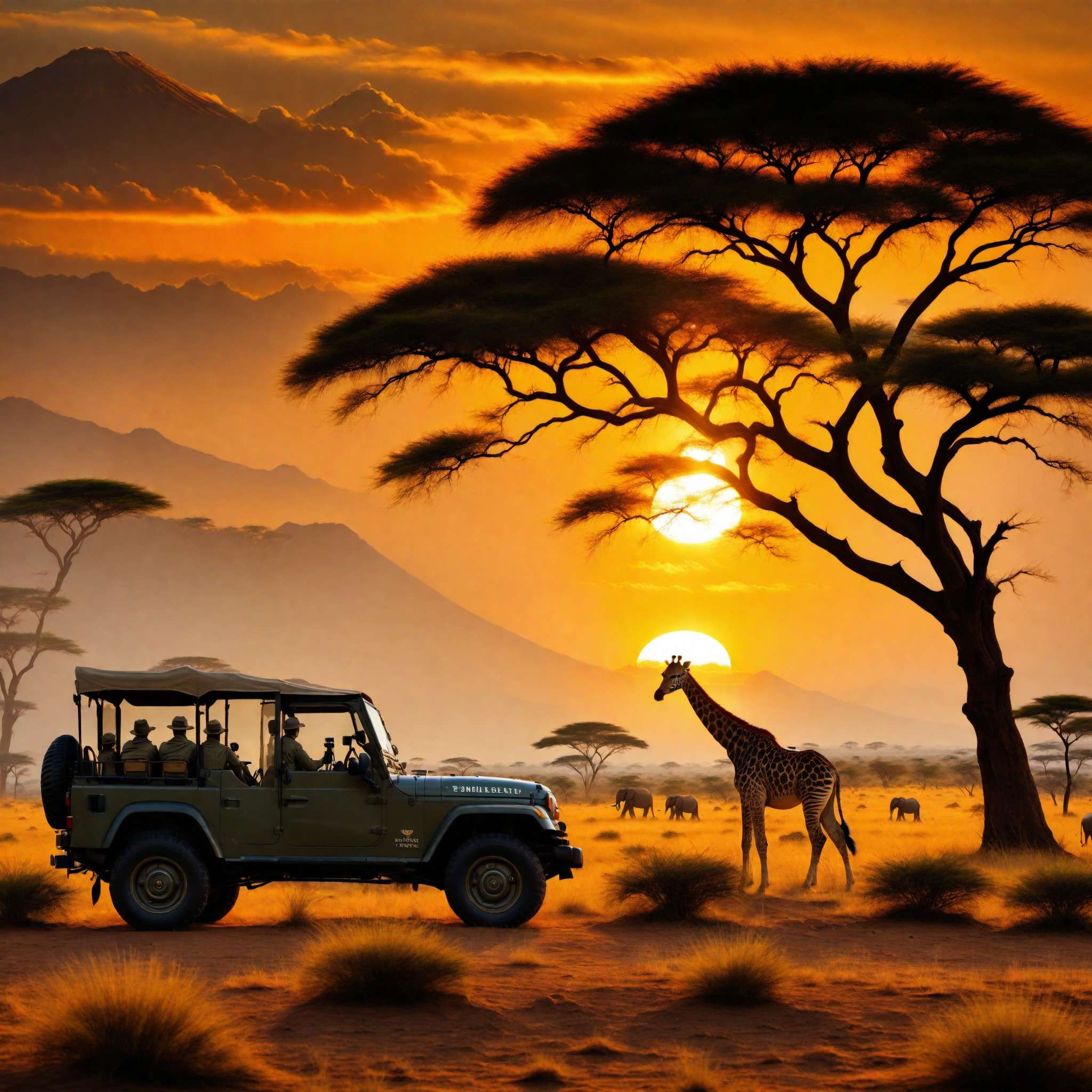
© Copyright , ZombieBunny.Org
Unforgettable safari in Serengeti
Serengeti, in northern Tanzania, is a wildlife enthusiast’s dream. Home to one of the largest and most diverse concentrations of wildlife on the planet, a safari in Serengeti offers an unforgettable wildlife viewing experience.
The park’s vast plains are teeming with wildlife all year round, including the Big Five — lion, leopard, elephant, rhino, and buffalo. However, Serengeti is perhaps best known for the Great Migration. This annual event, often described as the ‘Greatest Show on Earth’, involves over a million wildebeest, zebras, and antelopes moving across the plains in search of fresh pastures.
Game drives, the most common way to explore Serengeti, offer close encounters with the wildlife. Expert guides help you spot and identify animals and birds, enhancing your safari experience. For a more immersive experience, consider a walking safari, which allows you to explore the park’s smaller wonders, like tracks, plants, and insects.
Serengeti’s wildlife spectacle continues after dark. Night safaris offer a chance to see nocturnal animals, like leopards, hyenas, and bush babies. The park’s clear skies, free from light pollution, also offer incredible stargazing opportunities.
Staying in one of the park’s lodges or tented camps is part of the Serengeti safari experience. Falling asleep to the sounds of the African bush and waking up to a stunning sunrise over the plains is truly magical.
A safari in Serengeti is more than just a wildlife viewing experience; it’s a journey into the heart of the wild, making it an unmissable spot on your ultimate travel bucket list.
Conservation efforts in Serengeti
Serengeti, one of Africa’s most renowned wildlife destinations, is not just about wildlife viewing; it’s also a hub of conservation efforts. These initiatives aim to protect and preserve the park’s rich biodiversity and delicate ecosystems for future generations.
The Serengeti National Park is a UNESCO World Heritage Site and is managed by the Tanzania National Parks Authority. The authority works tirelessly to protect the park’s wildlife from threats like poaching and habitat loss. Anti-poaching patrols, community education programs, and strict regulations on tourist activities are some of the measures in place.
Conservation organizations, like the Frankfurt Zoological Society and the Serengeti Preservation Foundation, work alongside the park authorities. They conduct research, support anti-poaching efforts, and run programs to mitigate human-wildlife conflict.
The Great Migration, a key attraction of Serengeti, is also a major focus of conservation efforts. The Migration Corridor Conservation Initiative is a project aimed at protecting the migration routes of the wildebeest and other migratory species.
Ecotourism is another important aspect of conservation in Serengeti. Many lodges and camps in the park operate on sustainable principles, minimizing their environmental impact and contributing to local communities.
Visitors to Serengeti can support these conservation efforts by following park rules, choosing eco-friendly accommodation, and respecting local communities and wildlife.
These conservation efforts ensure that Serengeti continues to be a thriving ecosystem and a haven for wildlife, making it a responsible and rewarding choice for your ultimate travel bucket list.
Best time to visit Serengeti
The Serengeti, a wildlife wonderland in Tanzania, offers a remarkable safari experience year-round. However, the best time to visit depends on what you want to see and experience.
If you wish to witness the Great Migration, timing is crucial. The migration is a year-round cycle, with each season offering a unique spectacle. From December to March, the southern Serengeti and Ndutu region are best for viewing the wildebeest calving. Between July and September, the northern Serengeti offers dramatic river crossings.
The dry season, from late June to October, is generally the best time for wildlife viewing in Serengeti. The vegetation is sparse, making animals easier to spot, and they tend to congregate around water sources, providing excellent game viewing opportunities. This is also the best time to see the park’s predator action.
The wet season, from November to May, brings lush landscapes and plentiful birdlife, with migratory birds adding to the resident species. While wildlife viewing can be challenging during this period due to the thicker vegetation and scattered wildlife, it’s a great time for birdwatching and photography.
Lastly, consider the climate. The dry season is warmer and less humid, while the wet season, although more humid, offers cooler temperatures.
Choosing the best time to visit Serengeti depends on your interests and preferences. Regardless of when you decide to visit, Serengeti promises a memorable safari experience, making it an unmissable spot on your ultimate travel bucket list.
A Cultural Extravaganza in Jaipur India
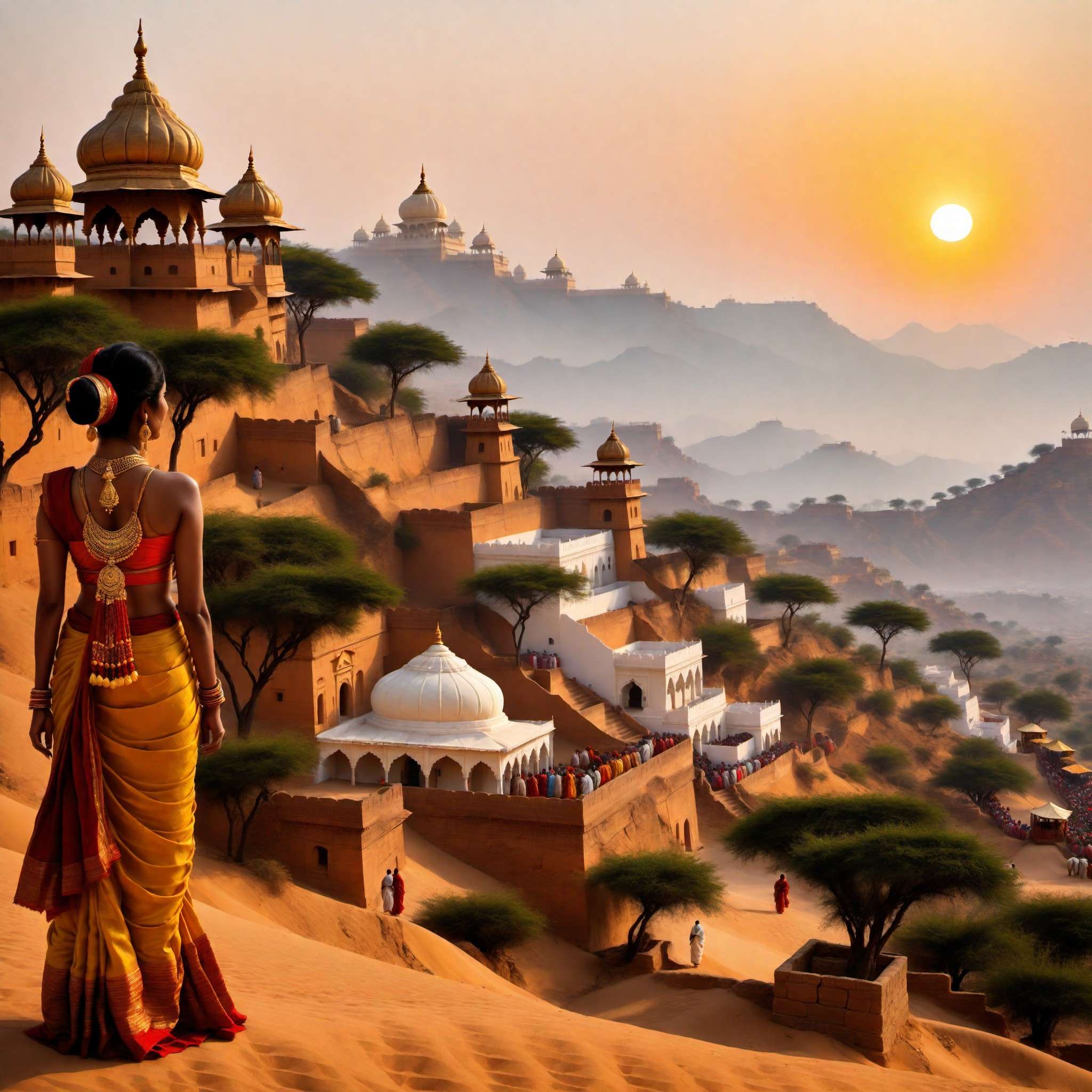
© Copyright , ZombieBunny.Org
Historical attractions in Jaipur
Jaipur, the capital city of Rajasthan in India, is a treasure trove of historical attractions. Known as the ‘Pink City’ for its distinctive pink-hued buildings, Jaipur offers a journey into India’s royal past with its magnificent forts, palaces, and architectural marvels.
The Amber Fort, a stunning fort-palace complex made of red sandstone and marble, is a must-visit. Overlooking the Maota Lake, the fort is known for its artistic style, blending both Hindu and Mughal architecture. Don’t miss the Sheesh Mahal, a stunning hall of mirrors within the fort.
The City Palace, located in the heart of Jaipur, is another symbol of the city’s royal legacy. This grand complex, with its courtyards, gardens, and beautifully decorated buildings, offers a glimpse into the royal lifestyle of the past.
The Hawa Mahal, or ‘Palace of Winds’, is one of Jaipur’s most iconic landmarks. This five-story palace, with its intricate latticework, was designed to allow royal ladies to observe street life without being seen.
Jantar Mantar, a UNESCO World Heritage Site, is a collection of architectural astronomical instruments. Built by Maharaja Jai Singh II, it showcases the scientific acumen of its time.
Lastly, the Jal Mahal, a palace floating in the middle of Man Sagar Lake, is a sight to behold, especially at sunset.
Each of these historical attractions offers a unique window into Jaipur’s rich history and culture, making them unmissable on your visit. So, get ready to step back in time and explore the historical wonders of Jaipur, an essential spot on your ultimate travel bucket list.
Cultural festivals of Jaipur
Jaipur, the vibrant capital of Rajasthan, is known for its rich culture and traditions, which are best experienced during its many festivals. These colorful events, with their traditional music, dance, and rituals, offer a glimpse into the city’s cultural heritage.
The Jaipur Literature Festival, held annually in January or February, is one of the largest literary festivals in the world. Here, you can engage in thought-provoking discussions with renowned authors, scholars, and literary enthusiasts.
In March, the city celebrates the festival of colors, Holi. Known as the ‘Festival of Love’, Holi in Jaipur is a riot of colors, with people smearing each other with colored powders, dancing to traditional music, and indulging in festive foods.
The Teej Festival, held during the monsoon season, is another major event. Dedicated to Goddess Parvati, this festival sees women dressed in vibrant attire, swinging on decorated swings, and participating in processions.
In November, Jaipur hosts the Elephant Festival, a unique event where elephants are adorned with vibrant decorations and participate in various competitions, including polo and tug-of-war.
Lastly, the Jaipur International Film Festival, held in January, showcases a diverse range of films from around the world, offering a platform for filmmakers and cinema enthusiasts.
Experiencing Jaipur’s cultural festivals allows you to immerse yourself in the city’s vibrant culture and traditions. So, plan your trip around these festivals to make Jaipur an unmissable spot on your ultimate travel bucket list.
Shopping guide for Jaipur
Jaipur, often referred to as a shopper’s paradise, is renowned for its traditional arts and crafts. From vibrant textiles and exquisite jewelry to unique handicrafts and antiques, shopping in Jaipur is an experience not to be missed.
The city’s bustling bazaars are a treasure trove of traditional Rajasthani items. Johari Bazaar, known as the ‘jeweler’s market’, offers a wide array of gold, silver, and gemstone jewelry. Tripolia Bazaar is famous for its lac jewelry and Bandhani, a traditional tie-dye technique used on fabrics. For pottery and brassware, head to the Bapu Bazaar and Nehru Bazaar.
For textiles, Jaipur is known for its block-printed fabrics and carpets. Visit Sanganer or Bagru, villages on the outskirts of Jaipur, renowned for their block-printing workshops. You can even try your hand at this age-old craft.
If you’re looking for unique souvenirs, consider blue pottery, a traditional craft that’s unique to Jaipur. These turquoise blue ceramics, with intricate designs, make for beautiful decorative items.
For a more relaxed shopping experience, explore Jaipur’s upscale boutiques and shopping centers, which offer a curated selection of traditional and contemporary products.
Remember to haggle. Bargaining is a common practice in Jaipur’s markets, so don’t hesitate to negotiate the price.
Whether you’re a seasoned shopper or a curious traveler, Jaipur’s vibrant markets offer a shopping experience like no other, making it an unmissable spot on your ultimate travel bucket list. So, get ready to explore the colors, crafts, and creativity of Jaipur’s shopping scene.
Conclusion: Crafting Your Ultimate Travel Bucket List
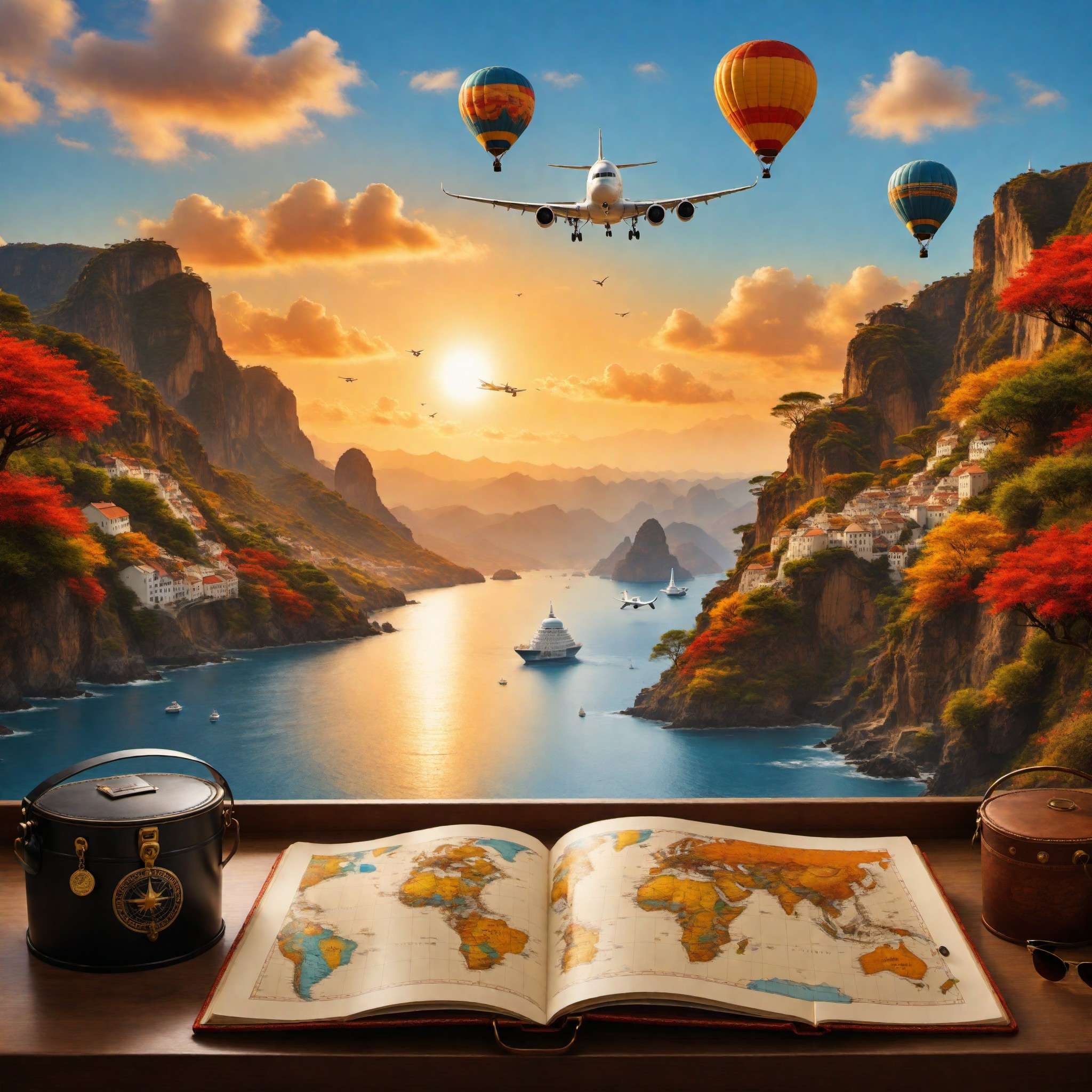
© Copyright , ZombieBunny.Org
Recap of the unmissable spots
Creating your ultimate travel bucket list is a journey in itself, a journey of exploring possibilities, dreaming of adventures, and making plans. Each destination on your list should be a place that speaks to your heart, ignites your imagination, and offers unique experiences.
The mystical landscapes of Iceland, with their stunning natural wonders and rich folklore, offer a journey into the heart of nature. The luxury and marine beauty of the Maldives promise an indulgent, tranquil getaway. The wildlife spectacle of Serengeti, Tanzania, takes you on an unforgettable safari adventure, while the historical attractions and vibrant festivals of Jaipur, India, invite you to immerse yourself in a rich cultural extravaganza.
Each of these destinations offers unique experiences that make them unmissable spots on your ultimate travel bucket list. Whether it’s the awe-inspiring spectacle of the Northern Lights in Iceland, the romantic seclusion of a Maldivian over-water villa, the thrill of witnessing the Great Migration in Serengeti, or the joy of shopping for traditional crafts in Jaipur’s bustling bazaars, these experiences promise lasting memories.
So, as you craft your ultimate travel bucket list, consider what you seek from your travels. Is it adventure, relaxation, cultural immersion, or wildlife encounters? Perhaps it’s a mix of all these. Whatever your travel dreams, these unmissable spots offer a wealth of experiences, promising journeys that will enrich your life and satisfy your wanderlust.
Inspiration to create a travel bucket list
Crafting your ultimate travel bucket list is an exciting process. It’s about more than just choosing destinations; it’s about envisioning experiences, adventures, and moments that you yearn to live. Whether it’s witnessing the ethereal beauty of the Northern Lights in Iceland, lounging in a luxury villa in the Maldives, spotting a pride of lions on a Serengeti safari, or exploring the vibrant bazaars of Jaipur, your bucket list is a reflection of your travel dreams.
Creating a travel bucket list is also an opportunity to learn and grow. Each destination comes with its unique culture, history, and traditions that broaden your understanding of the world. It stirs your curiosity, fuels your imagination, and enriches your life with unforgettable experiences.
Your travel bucket list can also inspire personal growth. Travel challenges us, pushes us out of our comfort zones, and empowers us to discover new facets of ourselves. It’s about creating memories that last a lifetime, stories that you can share, and experiences that shape you.
In conclusion, your ultimate travel bucket list is a canvas for your travel dreams. It’s a reminder of the adventures that await you, the experiences that inspire you, and the journeys that will define you. So, dream big, plan well, and let your ultimate travel bucket list guide your travels, making each journey an unmissable adventure.
Encouragement to start the journey
Crafting your ultimate travel bucket list is just the first step on your journey of discovery. The real adventure begins when you start ticking off those destinations, one by one. Each journey brings new experiences, new insights, and new stories to tell. So, don’t just dream about those unmissable spots on your list – start planning your trips and turn those travel dreams into reality.
Travel is a transformative experience. It broadens your horizons, challenges your perceptions, and creates lasting memories. Whether it’s the awe-inspiring landscapes of Iceland, the tranquil waters of the Maldives, the raw wilderness of the Serengeti, or the rich culture of Jaipur, each destination offers unique experiences that enrich your life.
Remember, travel is not just about the destinations you visit; it’s also about the journey. It’s about the people you meet, the food you taste, the sights you see, and the experiences you live. It’s about stepping out of your comfort zone, embracing new experiences, and growing as a person.
So, take that first step on your travel journey. Start planning your trips, packing your bags, and setting off on your adventures. Let your ultimate travel bucket list guide you on your travels, inspire your journeys, and lead you to experiences that you’ll cherish for a lifetime. Your travel dreams are waiting to be fulfilled – all you need to do is start the journey.
Please support our site and purchase something from our store.





